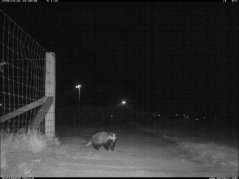Dossier
Wildlife bridges
A wildlife bridge, also known as an 'ecoduct' in the Netherlands, is an overpass that allows animals to cross a road. In the Netherlands, wildlife bridges are part of the national network of protected areas. This network aims to enhance biodiversity. The Netherlands has currently got 30 wildlife bridges, with the build of another 20 planned.
It is still unclear how effective wildlife bridges and other wildlife crossings are, and whether recreational use of wildlife bridges can be combined with a function as a wildlife crossing.
Wageningen Environmental Research focuses on the following questions:
- What are the population-level effects of wildlife bridges? Do wildlife bridges increase the viability of animal populations? And to what degree do they contribute to maintaining biodiversity?
- Can wildlife bridges be used by recreationists? Does animal behaviour change when recreationists are allowed to use wildlife bridges? And if so, in what way? And how does this change effect the survival of populations?
- What are the guidelines for the optimal positioning, dimensions and design of a wildlife bridge? What are the key factors for correct use of an wildlife bridge?
- What are the guidelines for setting up and executing monitoring studies for wildlife bridges? How do I set up a scientifically sound monitoring plan? And how can I make my research results widely applicable?
